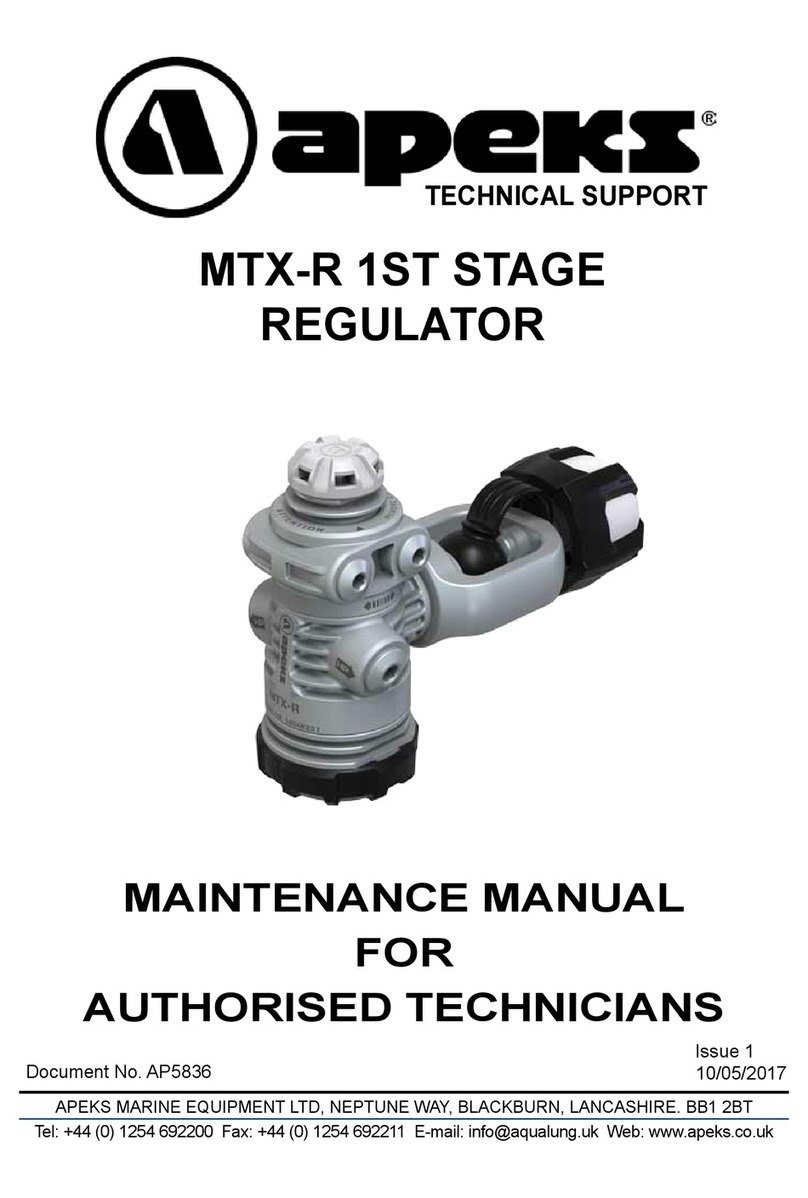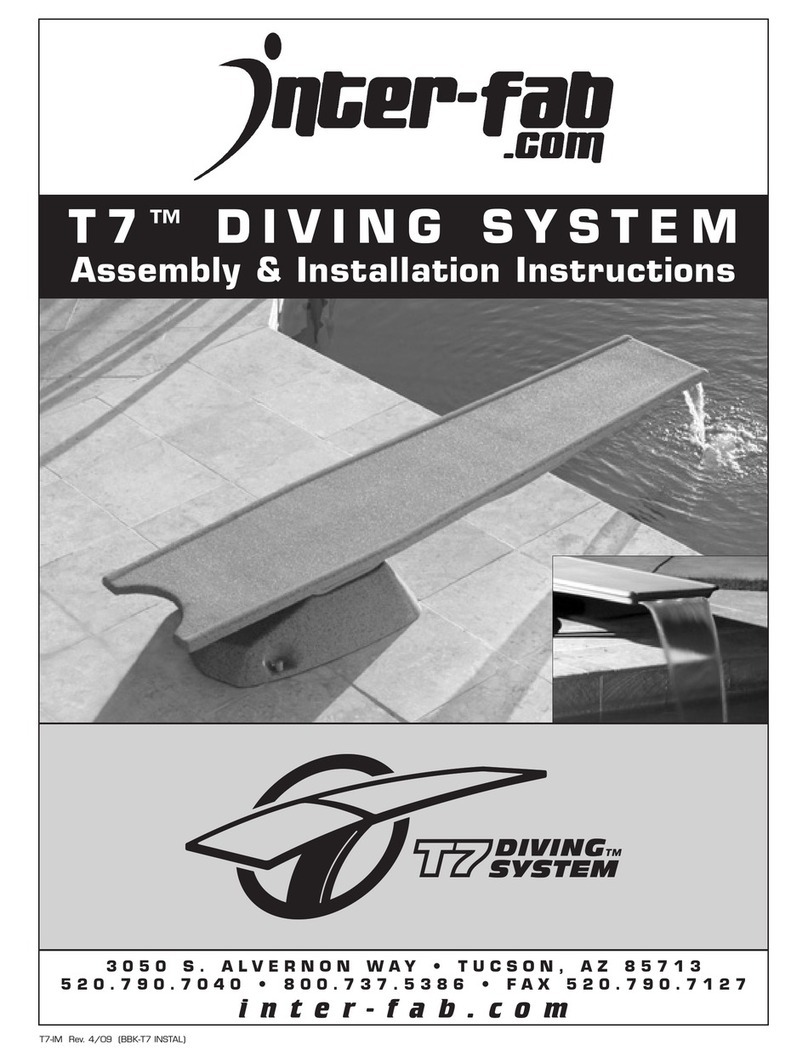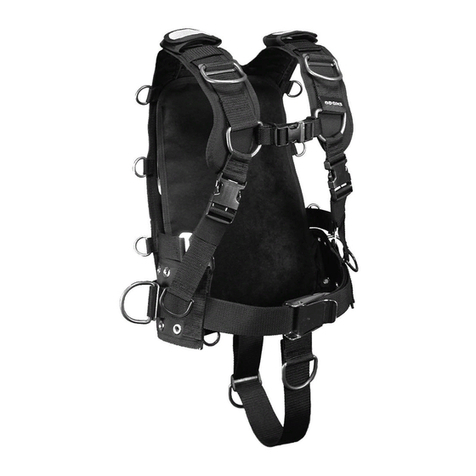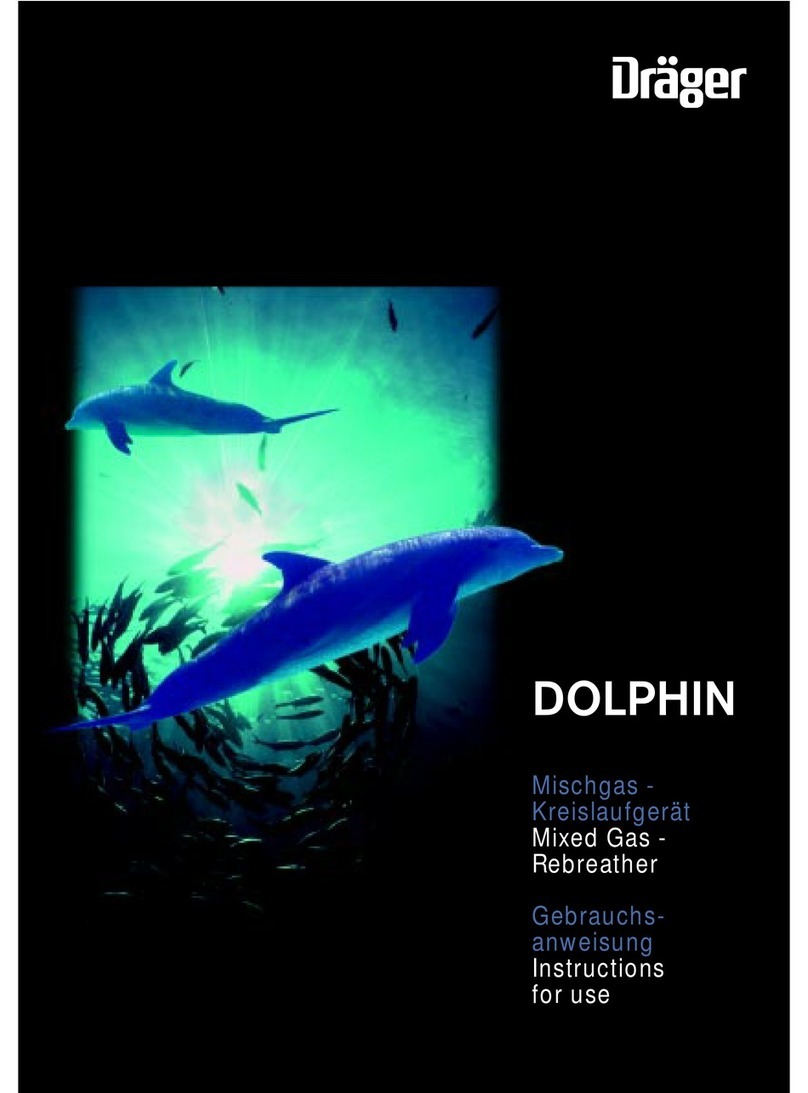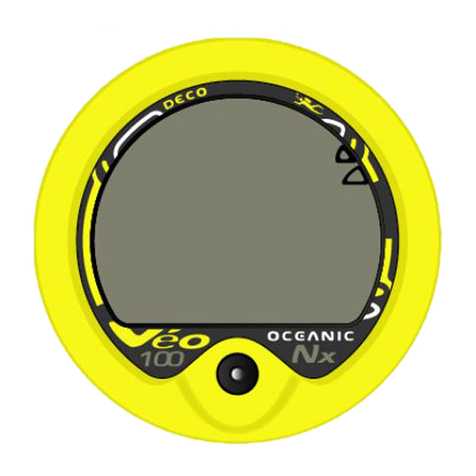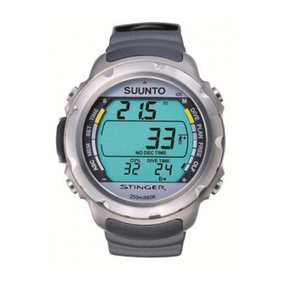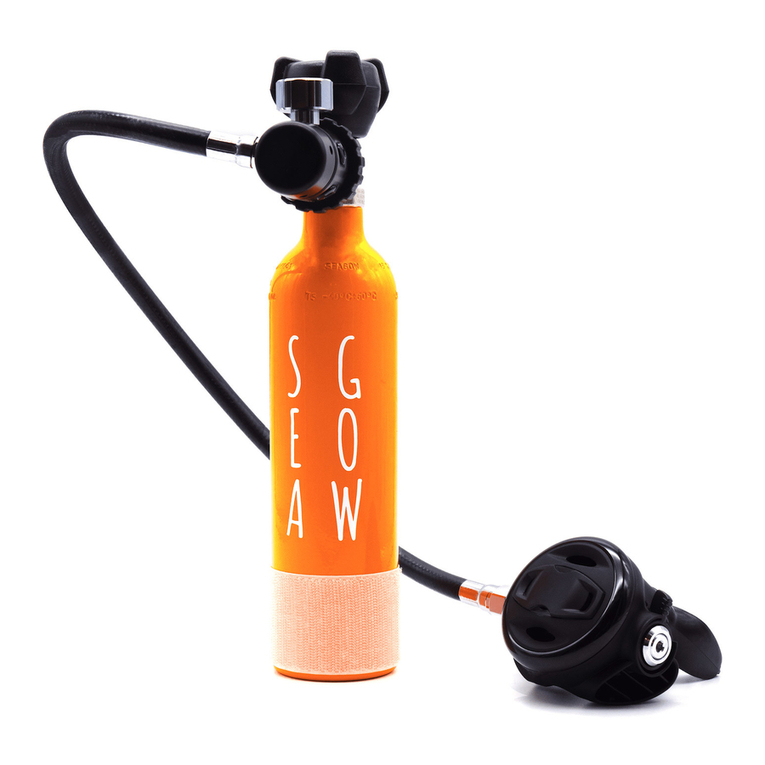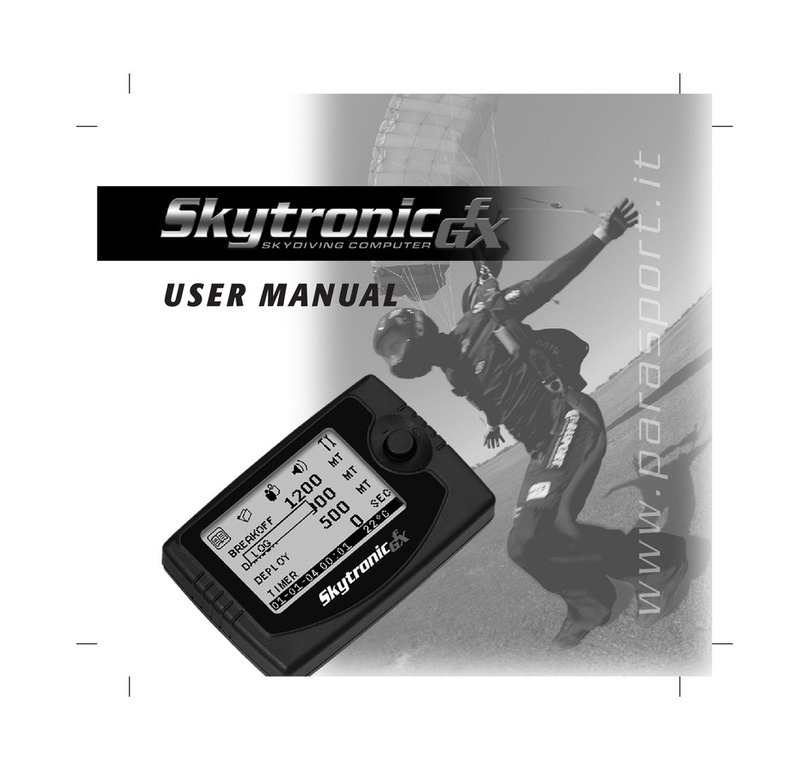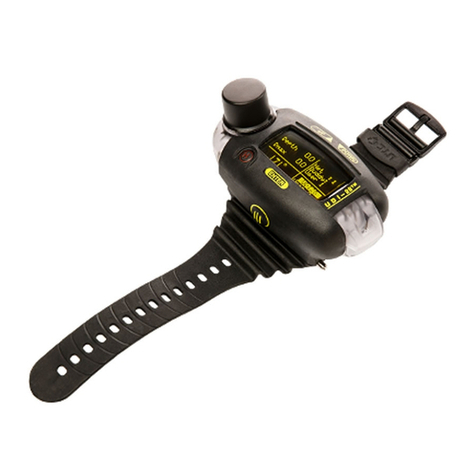Waterproof DRYSUIT User manual

Waterproof Drysuite Owners Manual Page 1 of 10
DRYSUIT OWNER’S MANUAL
Please read this entire manual before diving.
Failure to follow the instructions in this manual can
result in serious injury or death.

Waterproof Drysuite Owners Manual Page 2 of 10
Contents:
Page:
Warranty 3
Important Note 4
Before Diving 5
Suit Use 6
Suit Exhaust Valve Use 7
After Diving/Suit Storage 7
Adjustments of Seals 8
Care of the Latex Seals 8
Care of the Dry Zipper 8
Care of the Valves 9
Care of the Drysuit Undergarments 9
A few tips to help you stay Warm 9
and Comfortable.
What to do if you have a Leak 10

Waterproof Drysuite Owners Manual Page 3 of 10
The Waterproof World Wide Warranty
Waterproof warranties these drysuits against defects in materials and
workmanship to the original purchaser for a period of two years. This warranty
does not cover damage due to abuse, neglect, improper usage, lack of proper
maintenance or normal wear and tear. Lack of proper maintenance will cause
abnormal deterioration.
Damage due to normal wear and tear or miss use will be repaired at a reasonable
charge.
IMPORTANT NOTE!
Please be sure to enter www.waterproof.se and
completely fill out the warranty form within 30 days
from purchasing to validate the World Wide
Waterproof warranty.
EC Type Examination by:
RINA Test Laboratory, Calata G. Gadda 16126 Genova
Notified Body no. XXXX
Waterproof Diving International AB
Industrivägen 37
433 61 Partille
Sweden
www.waterproof.se

Waterproof Drysuite Owners Manual Page 4 of 10
Congratulations on purchasing a Waterproof Drysuit!
This suit has been carefully manufactured from the best
available materials, and with reasonable care it will give you
many years of service. Please read the care, maintenance and
use information in this manual and follow the suggestions
carefully.
Important note!
Drysuit diving can add immensely to the comfort, enjoyment, and safety of cold
water divers.
But while drysuits are easy to use, like any piece of diving equipment they require
instruction in proper use and safety procedures.
If you are unfamiliar with diving in drysuits, or with the type of suit you have
purchased, make sure you have received training in a confined water situation
before attempting to dive in open water. A drysuit course is an excellent idea. At
minimum, you should have some supervised confined water training in drysuit use
that meets the standards of your certifying agency. Certain aspects of weighting,
buoyancy control and emergency procedure must be handled differently in a
drysuit, and while the techniques are easy to master for most divers (many feel
diving in a drysuit is easier than diving in a wetsuit) proper instruction can make
your initial open water experience more enjoyable and much safer.

Waterproof Drysuite Owners Manual Page 5 of 10
WATERPROOF DRYSUIT OWNER’S MANUAL
Before Diving:
Inspect the latex seals for damage. Pay particular attention to making sure that edges of the
seals are not cracked or torn. If they are, it could indicate that the seals are damaged and could
fail. Damaged seals should be replaced before diving with the suit. Cuff rings for quick "in the
field" replacement of latex seals are available from your Waterproof dealer and are a helpful
addition to a "save a dive" kit.
• Make sure you have removed watches, rings, or any jewelry with sharp points prior to
donning the suit. Do not wear anything which could catch the seals and tear them.
• Make sure the zipper is lubricated. Use wax lubricants only, DO NOT use silicone, silicone
sprays, or petroleum based lubricants. These products will damage the zipper and the suit.
Check the teeth to make sure they are in good condition and that the slider operates freely.
• Lubricate the seals to ease entry into the suit. In a dry environment, unscented talc makes a
good lubricant. In a wet environment (rain or small boat) many divers prefer to carry a small
bottle of a water based lubricant such as a weak soap solution or shaving cream. DO NOT use
silicone or petroleum based lubricants, even those promoted for drysuit seals, as they will
damage the suit.
• When donning the suit make very sure that the undergarments do not catch in the zipper.
Pulling the zipper closed over on obstruction can break the zipper.
• Make sure both valves are securely screwed into the suit. Ensure that the inflator valve and
exhaust valve work properly by operating them before every entry into the water.

Waterproof Drysuite Owners Manual Page 6 of 10
Suit use:
Note- these instructions are a general guide only and do not substitute for
instruction in drysuit diving. Comprehensive drysuit diving instruction should
be obtained from a certified instructor trained in drysuit diving before you
dive.
Seals:
It is essential that the seals be properly trimmed to fit and that they lay flat against your skin
with no wrinkles that could allow water to enter the suit. If you are not experienced in
trimming drysuit seals have your dealer or instructor help you get a good fit.
(See Adjustment of Seals on page 8 )
Weighting:
The suit should be used only with proper weighting, consult with a qualified instructor for help
if you are unsure about your weighting. Too much or too little weight for the suit and insulation
combination you are using may be uncomfortable or unsafe.
Buoyancy control:
In order to relieve the squeeze caused by the compression of the air inside the suit and to
maintain neutral buoyancy it will be necessary to introduce air into the suit via the inflation valve
as you descend. When ascending it will be necessary to vent air from the suit using the
adjustable exhaust valve in order to keep from ascending too fast. Practice buoyancy control
with all of your equipment including drysuit in controlled conditions (pool or shallow water)
before diving in open water.
Suit Inflation Valve use:
The Waterproof Drysuits come equipped with a swivelling suit inflation valve, which allows for
convenient positioning of the low pressure inflator hose. The low pressure inflator hose must
be connected to a low pressure port on the first stage of your regulator and attaches to the suit
inflator valve via a quick release connector. Pull back the spring loaded flange on the
quick release connector and push the connector to engage the fitting on the suit inflator valve.
Release the flange to lock the connector in position. Always make sure that the inflator hose is
securely fastened before diving. To release the hose form the valve pull back on the spring
loaded flange and pull the hose away from the valve assembly. Practice this procedure with your
diving gear (including gloves) on, as it might be necessary to perform it in an emergency.

Waterproof Drysuite Owners Manual Page 7 of 10
Suit Exhaust valve use:
The automatic adjustable exhaust valve is designed to vent excess air form the suit by simply
positioning yourself underwater so that the valve is in the high position. The amount of air
pressure the valve will retain inside the suit is adjustable. Rotating the valve flange clockwise will
increase the air held inside the suit, rotating the flange counter clockwise will cause the suit to
retain less air. Even when the valve has been rotated fully clockwise so as to retain the
maximum air, pressing downwards on the flange will cause air to vent as if the valve were fully
opened, so long as the pressure is maintained. Most divers find that diving with the valve
completely or nearly completely opened (turned counter clockwise as far as possible) allows for
the most precise buoyancy control while underwater. Turning the valve to a more closed
position when on the surface (so as to retain more air) may make resting or swimming more
comfortable. Your diving instructor or retailer can help you find the buoyancy and weighting
combination that works best for you.
After Diving/Suit Storage:
• DO NOT use silicone sprays or lubricants on the latex seals or zipper. They will not help the
seals last longer and will make seal or zipper replacement difficult or impossible if the silicone
has soaked into the suit material. Seals should be cleaned with soap and water and then
lubricated with unscented talc.
• Rinse your suit after diving, taking particular care to clean sand and salt from the valves and
zipper. The valves should be operated while being rinsed.
• Always dry the suit after diving, do not store it wet. If perspiration has made the interior of
the suit damp it may be necessary to air the suit inside out, or hang it with the zipper
completely open until dry.
• Neoprene suits should not be hung for extended periods on narrow hangers, as the suit
material may become stressed where it passes over the hanger. Extra wide hangers designed for
dry or wetsuit storage may be used. Suits may be stored in their bag, but take care with the
Neoprene suits not to repeatedly fold them in the same spot, as this may create permanent
creases in the suit material.
• It is important to store the suit away from sources of ozone (electric motors, gas water
heaters, home furnaces, etc.). and away from sources of UV radiation (mainly sunlight), as both
of these will degrade the latex seals more rapidly. Suits stored for extended periods will be well
protected if stored inside sealed plastic bags.
• Lubricate the zipper with paraffin wax before storage. When the suit is stored or transported
in its bag the zipper must be open. When the zipper is open it is very flexible, when closed it
becomes stiff and could be damaged or broken if inadvertently bent.
• Do not store your suit where it will be subjected to high temperatures. Drysuits can be
damaged by excessive heat, as in the trunk of a car in summer sun.
• Before storage dust the latex seals with unscented talc (available from a Waterproof dealer).
This will help prevent the latex from sticking to itself and will make the suit easier to put on the
next time. Be sure to use only unscented talc, as scented varieties contain oils that might
damage the latex.

Waterproof Drysuite Owners Manual Page 8 of 10
Adjustments of Seals
On a new suit, or one that has had new neck or wrist seals installed, the seals will most likely
need adjusting. The seals need not be uncomfortable to seal properly. They only need to be
snug against the skin for a proper fit. If you are not familiar with the proper fitting or trimming
of seals contact your drysuit dealer before cutting. If neck and/or wrists seals are too tight cut a
little (1/4 inch/6mm or less) off the end/length of the seal. Be sure to remove suit before cutting
seals. A pair of sharp regular household scissors will cut the seal easily. Latex seals are marked
with rings for cutting guides. Cut only a small amount (1/4 inch/6mm or less) at a time, then
check fitting over wrists or neck. If you cut too much you may cause a seal to leak and it will
have to be replaced.
Care of the Latex Seals
Latex seals are standard on Waterproof drysuits, neoprene seals are available as an option.
Most divers find that latex provides a dryer and more comfortable seal, however the nature of
the latex material means that more care is required than for neoprene seals and after some
time the latex seals may need to be replaced. Seal replacement is not difficult but must be done
correctly. Classes in seal replacement are offered by some dealers if you want to learn to "do it
yourself", however we recommend that you take your suit to a Waterproof dealer experienced
in drysuit repair.
You can help your seals to last by following these suggestions:
• Store the suit away form sources like Ozone and UV radiation or Sunlight.
• Rinse latex seals with fresh water and dry before storage.
• Always dust dry latex seals with unscented talc (available from your Waterproof dealer)
before storage.
• Take care not to catch the seals on sharp objects.
• Periodically wash the seals with soap and water to remove body oils that may accumulate and
cause degradation of the material.
Care of the Dry Zipper
The Dry zipper is the heart of your drysuit and it s most expensive component. With care the
zipper can last for the life of the suit. All zippers are examined and pressure tested before
leaving the factory. The drysuit zippers can only be damaged by mishandling. Please treat with
care. We can not take responsibility for zippers damaged by misuse.
• Lubricate the zipper (on the outside of the teeth only) with paraffin wax (available from your
Waterproof dealer) or beeswax, DO NOT use silicone or petroleum based lubricants.
Avoid sticky waxes, as they will tend to attract sand and grit. A very small amount of wax is
sufficient. Clean zipper with fresh water after diving being sure to remove any debris from
between zipper teeth. Dry zipper before storage. Rub wax on outside of zipper teeth after
every 4th or 5th dive and before storage. Always store folded or bagged suit with zipper open.
• When storing or transporting the suit keep the zipper unzipped. When opened the zipper is
much more flexible, when closed the zipper becomes semi-rigid and might be damaged if it is
folded, or if a heavy object were inadvertently placed on it.
• When opening and closing the zipper be sure the teeth are in alignment and that the
supporting tape is not kinked. This will normally require two hands. Take great care not to zip
undergarment material into the dry zipper, as this is the most common way the zipper gets
broken.

Waterproof Drysuite Owners Manual Page 9 of 10
Care of the Valves
The inlet and exhaust valves require little maintenance besides keeping them clean. They should
be periodically (at least annually) checked by a qualified service facility. DO NOT attempt to
disassemble the valves yourself.
• Rinse the valves after diving to remove sand and foreign material.
• Use only undergarments that do not produce excessive lint. Lint can become caught in the
exhaust valve and cause it to leak.
Care of the Drysuit Undergarments
One of the most important parts of your drysuit system, and the one most often overlooked, is
the drysuit undergarment. Care in selection and use of undergarments will greatly increase your
comfort.
• Anytime you are in the drysuit your body is likely to be producing perspiration. Wash your
drysuit underwear regularly to keep it from building up salt in the fibers, which can cause it to
become less efficient.
A few tips to help you stay warm and comfortable.
Use proper undergarments.
• Use only undergarments made from non- absorptive materials such as polyester fleece or
Thinsulate¤. Don t wear cotton sweatsuits, t-shirts, or other garments in our drysuit,
particularly next to the skin. Cotton is highly absorptive and will soak up like a sponge any
moisture your body puts out. This creates a thermal conduit which will conduct heat away from
your body and make you feel clammy.
• Use undergarments that are not restrictive. Tight fitting or confining undergarments that
restrict motion detract from both comfort and safety. Waterproof s drysuit underwear system
is made from a four-way stretch polyester which allows completely unrestricted motion.
• In diving as in other active sports, layering undergarments is generally preferable to a single
thick layer. Waterproof s drysuit underwear system is designed as a set, with a farmer john,
jacket, vest, and booties. This allows the diver to match insulation to the conditions on a given
dive. Many divers find that polyester long underwear commonly used for skiing makes an
excellent additional layer for extremely cold conditions.
Weight yourself properly:
• Proper weighting and diving technique allows the drysuit to automatically compensate for
most buoyancy shifts during diving. Spend some time getting your weight right, work with your
dealer and/or instructor to become relaxed and comfortable with your diving system.

Waterproof Drysuite Owners Manual Page 10 of 10
If You Have a Leak
Almost everyone who dives actively in a drysuit sooner or later experiences a leak. Most of
these are minor and result only in slight dampness, however, if you notice water entering your
suit during a dive, end the dive and surface to determine the cause, do not tough it out . A
serious leak could cause loss of buoyancy, chilling, rapid air consumption, or other problems.
The most likely causes are easy to fix and you can be back in the water soon.
While major leaks or seal failures are extremely rare, you will probably at some point come up
from a dive with an area of dampness that seems more than would be accounted for by normal
perspiration. Carefully note the location of the dampness. Check to see if it is near a wrist or
neck seal, a valve, or the location of the zipper. This will give you an excellent clue as to the
location of the leak. The most common causes of leaks in drysuits are:
1) Failure to get a good seal before entering the water. Hair or undergarments might be trapped
under the seals or the seal might be folded is such a way as to make an entry point for water.
2) Failure to completely close the zipper before entering the water. Make sure double checking
the zipper closure is part of your pre-dive procedure.
3) Valve leaks can be caused by loose valves, connecting the inflator hose while in the water can
cause a very small amount of water to enter the suit, or foreign material could have become
lodged in the exhaust valve. If this latter is the case it can often be corrected by flushing the
valve with water to wash out the foreign material.
4) Something might have punctured the suit. Sea urchin spines, sharp shells, and wire, hooks, or
sharp metal on boats or wrecks are common offenders.
5) You might have a tear or a pinhole in one of the seals. Check the latex material carefully,
particularly along the edges. If a leak is found you should take your drysuit to a dealer that is
qualified in drysuit servicing but the patching of small leaks can be an easy do-it-yourself project
with a couple of readily available items. Locating a very small puncture is sometimes difficult. If
the puncture is not visually obvious, the best procedure is to seal the wrist and neck seals with
cans or by folding, zip the suit up, and inflate it fully. A soapy water solution can then be sprayed
or sponged on the suspect area. Small leaks show themselves by producing bubbles. Mark the
spot and dry the suit before repairing the leak. Most small holes and tears (1/2 inch/12mm or
less) in either trilaminate or neoprene suits can be temporarily repaired with an Aquaseal type
product that is sold in dive equipment stores. Similar size cuts or tears in latex seals can easily
be repaired with the rubber patching materials used in fixing the leaks in bicycle tires. These
types of small repairs can last for years even though they are considered temporary or field
repairs. It is recommended that before your next dive trip that you have the repairs inspected
by a dealer that is familiar with drysuit servicing.
Waterproof Diving International AB
www.waterproof.se
Table of contents
Other Waterproof Diving Instrument manuals




